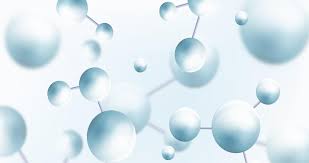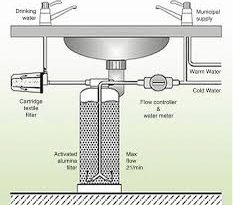A Novel Studies of 30M Metal Salts
A Novel Studies of 30M Metal Salts on the Self Condensation of Cyclic Ketones
Barun Kumar Mehta,a and Mandava Venkata Basaveswara Rao,b
a Department of Chemistry, National Defence Academy, Khadakwasla, Pune-411023, Maharashtra, India.
bDepartment of Chemistry, Krishna University, Machilipatnam-521001, A. P, India
Abstract :
A new and effective method was developed for the self-condensation of cyclic ketones in presence of 30M metal salts under hydrothermal conditions.
Keywords: Self-condensation, cyclic ketones, metal salts.
Introduction:
Self-condensation of aldehydes is a well known process,1 but self-condensation of ketones is limited to a few examples.2 Steric compression accounts for the poor reactivity of ketones. Special reagents and reaction conditions are required for their practical conversion, especially for non-activated cyclic and higher molecular weight ketones.2–7 Ketones being moderate carbonacids require strong bases, like lithium diisopropylamide and sodium hydride, for their self-condensation.2 Strong acids, like hydrochloric acid3a and polyphosphoric acid3b are also known to promote the self-condensation of ketones. Alternative methods reported for the self-aldol condensation of aromatic and aliphatic ketones require organometallic4,5 or titanium alkoxides,6 while cyclic ketone self-condensation has been reported using a W(CO)6/CCl4/UV system.8 The cationic rhodium complex [Cp*Rh(h6-C6H6)](BF4)2 is also known to promote the self-condensation of ketones.7 While efficient, some of these methods produce a significant quantity of hazardous metals and noxious solvents. The lack of a general strategy for the selective selfcondensation of non-activated ketones under mild conditions limit its application in organic synthesis.2 Interestingly, during process development for the synthesis of arylidene and alkylidene carbonyl compounds, Arnold et al. observed a very slow self-condensation of cyclopentanone by using two molar equivalents of anhydrous lithium perchlorate over a period of 11 days at room temperature.9a Recently microwave-assisted solvent-free self-condensation of carbonyl compounds was developed using catalytic amounts of triethylamine and lithium perchlorate.9
Increasing environmental concern around energy efficiency and wastemanagement provides an opportunity to develop even more powerful and greener methods for well known organic transformations. The hydrothermal reaction is undoubtedly quite effective as a new tool for promoting the desired products. We were particularly interested in the use of aqueous reaction media under hydrothermal conditions.10 We reported previously the self-condensation of cyclic ketones in hot aqueous ammonium chloride provided novel pyridine derivatives.11 In the course of our own efforts in this field, now in this paper we describes aqueous metal salts effect on the self-condensation of cyclic ketones under hydrothermal conditions.
Results and Discussion:
Table1. Optimization and metal salts effect for the self condensation of cyclohexanone
| Entry | aq MX | Yields (%)a 1 | Yields (%)a 2 | Yields (%)a 3 | Yields (%)a 4 | Yields (%)a 5 |
| 1 | ——- | 100 | – | – | – | – |
| 2 | 16MLiClb | 37 | 52 | 4 | 6 | 1 |
| 3 | 30MLiCl | 8 | 77 | 7 | 6 | 2 |
| 4 | 30MNaCl | 51 | 41 | 5 | 2 | 1 |
| 5 | 30MKCl | 29 | 62 | 4 | 3 | 2 |
| 6 | 30MLiBr | 21 | 34 | 2 | 38 | 5 |
| 7 | 30MCaCl2 | 18 | 52 | 3 | 19 | 8 |
a Determined by GC. b Saturated solution.
To establish the optimum conditions, we first examined the reaction of cyclohexanone (1) without aqueous lithium chloride at 250 °C. No product was obtained. Then we examined the self-aldol condensation reaction of cyclohexanone (1) with 16M aqueous lithium chloride which after 24 h gave 2 in an isolated yield of 52% (entry 2). The best results were obtained in the presence of 30 M aqueous lithium chloride, which after 24 h gave 2 in an isolated yield of 77% (entry 3). Other products trimers and tetramers were present only in a very limited amount (about 5−10%, entry 2), as observed in the GC−MS spectra shown in fig 1. It is important to notice that cycloclohexanone dimerizes to produce mainly a β,γ-unsaturated ketone. In order to investigate the effect of metal salts, varieties of other metal salts were used and surprisingly, we observed effect on the yield or ratios of the products (2-5) were different (shown in table 1, entry, 4-7). The reaction didn’t proceed when the use of 2-methylcyclohexanone instead of cyclohexanone (scheme-1).
Scheme 1. Self condensation of cyclic ketones.
By using optimised condition we used different cyclic ketones 1a-h (entry 1-8) to produce self condensation products 2a-h (entry 1-8) in moderate to good yields as shown in table 2. It is important to notice that cyclopentanone (1f, entry 6, table 2) dimerizes to yield predominantly an α,β-unsaturated ketone (2f, entry 6, table 2), while cycloclohexanone (1a, entry 1, table 2) dimerizes to produce mainly a β,γ-unsaturated ketone (2a, entry 1, table 2). The difference in the geometry of these two starting materials may be the key factor behind the observed difference in reactivity. Due to the thick nature and high boiling liquid, cycloheptanone and cyclooctanone gave low yield of the corresponding dimmers (2g & 2h, entries 7 & 8, table 2).
Table2. Substrate Scope
| Entry | Ketone | Conditions | Products (major) | Yields (%)a |
| 1 | 1a | 250 0C, 24 h | 2a | 77 |
| 2 | 1b | 250 0C, 72 h | 2b | 56 |
| 3 | 1c | 250 0C, 72 h | 2c | 25 |
| 4 | 1d | 250 0C, 24 h | 2d | 36 |
| 5 | 1e | 250 0C, 72 h | 2e | 57 |
| 6 | 1f | 250 0C, 24 h | 2f | 38 |
| 7 | 1g | 250 0C, 48 h | 2g | 29 |
| 8 | 1h | 250 0C, 72 h | 2h | 21 |
b Isolated yields.
Scheme 2. Probable reaction mechanism leading to product 2 and 3.
Experimental Section:
Materials and methods: All reactions requiring anhydrous conditions were conducted in flame-dried apparatus under an inert atmosphere using standard techniques. Syringes and needles for the transfer of reagents were dried at 100oC and allowed to cool in a desiccator over P2O5 before use. All the reagents and solvents were reagent grade and were used without further purification unless otherwise specified. Reactions were monitored by thin layer chromatography using aluminum plates pre-coated with a 0.25 mm layer of silica gel containing a fluorescent indicator (Merck Art. 5544); compounds were visualized by UV lamp and ninhydrin spray. Kieselgel 60 (40–63 µm) and neutral aluminum oxide (Acros, 50−200 µm) were used for column chromatography. Chemical shifts (δ) are given in parts per million (ppm). The splitting patterns are reported as s (singlet), d (doublet), t (triplet) and multiplet (m). Coupling constants (J) are given in Hz.
All reactions were conducted in a Hasteloy-C autoclave reaction vessel with cone and thread fittings and an internal volume of 20 mL, designed to withstand temperatures up to
400 °C.
General procedure for Preparation of 2a-2h (entry 1-8). A mixture of ketone (1a-h 4.5 mmol), lithium chloride (0.15 mol), and water (5 mL) was placed in a reaction vessel, and reacted at 250 °C for 24-72 h as shown in table 2. After quenching with water, the mixture was extracted with AcOEt. The crude product was purified by silica gel column chromatography (hexane/AcOEt = 9: 1) to afford 2a-h in moderate to good yields.
Selected compounds spectral data.
[1,1′-bi(cyclohexylidene)]-2-one (2a): FT IR (neat) (ν, cm-1): 2922, 2851, 1675, 1639, 1444, 729; 1H NMR (400 MHz, CDCl3): δ 5.38 (t, J=10 Hz, 1H), 2.88 (dd, J = 11.2 and 5.0Hz, 1H), 2.42-2.36 (m, 1H), 2.34-2.26 (m, 1H), 2.06-1.96 (m, 4H), 1.96-1.80 (m, 4H), 1.74-1.52 (m, 6H); 13C NMR (100 MHz, CDCl3): δ 211.82, 136.07, 123.88, 58.98, 42.33, 31.05, 27.88, 27.49, 25.50, 25.06, 23.06, 22.62.
2-cyclopentylidenecyclopentan-1-one (2f): FT IR(neat) (ν, cm-1): 2955, 2870, 1706, 1636, 725; 1H NMR (400 MHz, CDCl3): δ 2.77 (m, 2H), 2.51 (m, 2H), 2.29 (m, 4H), 1.90 (m, 2H), 1.76-1.64 (m, 4H); 13C NMR (100 MHz, CDCl3): δ 207.57, 158.82, 128.11, 40.02, 34.51, 32.77, 27.17, 26.91, 25.45, 20.31.
Conclusion:
In summary, we have developed a novel and effective method for the self-condensation of cyclic ketones using aqueous metal salts under hydrothermal conditions. The present methodology has described a remarkable metal salts effect on the self-condensation of cyclic ketones and results illustrate the potential utility of this method as an environmentally-friendly process. Further studies to explore the possibility of hydrothermal reactions in other types of transformation are in progress.
Acknowledgements:
The authors thank University Grants Commission for the financial assistance under Major Research Project.
References:
- Y. Watanabe, K. Sawada and M. Hayashi, Green Chem., 2010, 12,384 and references therein.
- (a)H.O. House,D. S. Crumrine, A.Y. Teranishi and H.D. Olmstead,J. Am. Chem. Soc., 1973, 95, 3310; (b) S. E. Denmark and W.Lee, Tetrahedron Lett., 1992, 33, 7729; (c) F. Fringuelli, G. Pani, O. Piiermatti and F. Pizzo, Tetrahedron, 1994, 39, 11499; (d) R.Mestres, Green Chem., 2004, 6, 583; (e) C. Capello, U. Fischer and K. Hungerbuhler, Green Chem., 2007, 9, 927–934.
- (a) A. T. Nielsen and W. J. Houlihan, Org. React., John Wiley, NewYork, 1968, vol 16, p. 1; (b) A. R. Bader, US Patent no. 2769842,1956; A. R. Bader, Chem. Abstr., 1956, 52, 439.
- T. Nakano, S. Irefune, S. Umano, A. Inada, Y. Ishii and M. Ogawa, J. Org. Chem., 1987, 85, 2239.
- C. Danen and T. T. Kensler, J. Am. Chem. Soc., 1940, 62, 3401.
- Y. G. Yatluk, V. Y. Sosnovskikh and A. L. Suvorov, Russ. J. Org. Chem., 2004, 40, 763.
- H. Terai, H. Takaya and T. Naota, Tetrahedron Lett., 2006, 47, 1705.
- C. Bozkurt, J. Organomet. Chem., 2000, 603, 252.
- L. K. Sharma, K. B. Kimb and G. I. Elliott. Green Chem., 2011, 13, 1546–1549.
- (a). B. K. Mehta, S. Dhar, H. Ila, H. Junjappa. Tetrahedron Lett. 1995, 36, 9377-9380. (b). B. K. Mehta, K. Yanagisawa, M. Shiro, H. Kotsuki, Organic Lett, 2003, 5, 1605-1608.
- H. Kotsuki, B. K. Mehta, K. Yanagisawa..Synlett 2001, 8, 1323–1325.




